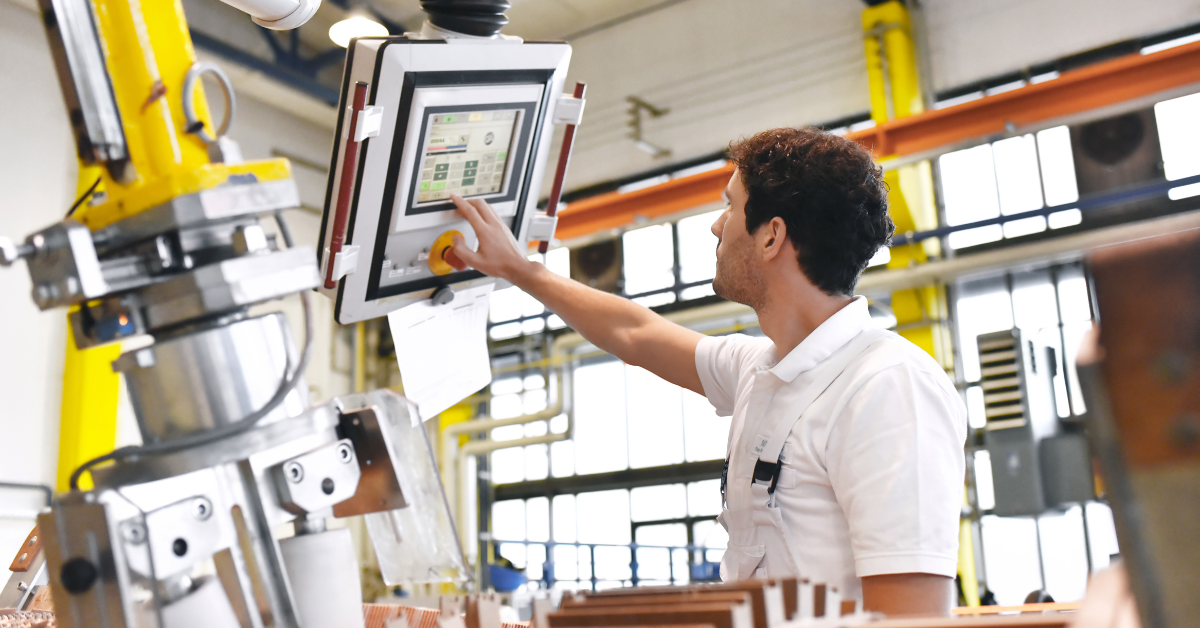Why Changeover Time Is Killing Your Productivity (And What to Do About It)
In manufacturing, the devil is in the details. Amid the hustle of meeting deadlines, maintaining quality, and balancing costs, one factor often gets overlooked—changeover time. Yet this invisible bottleneck can be one of the most potent drains on shop floor efficiency. For members of Industry Partners, where operational excellence can define market success, the time spent switching from one product, tool, or machine setup to another is not just lost time—it’s lost opportunity.
So why aren’t we talking about it more?
This blog aims to spark that conversation. Because while many businesses have invested in automation, ERP systems, and lean training, the basic discipline of reducing changeover times still offers one of the highest ROI opportunities on the shop floor.
What Exactly Is Changeover Time?
Changeover time (also known as setup time) is the interval needed to switch from producing one item or product configuration to another. It may involve:
-
Adjusting machine settings
-
Changing tools or dies
-
Cleaning equipment
-
Testing initial production runs
-
Updating digital instructions or parameters
Depending on the industry and complexity, changeovers can range from a few minutes to several hours. Multiply that by the number of times you switch setups in a day or week—and the cost becomes staggering.
Why Changeover Time Matters More Than You Think
Here’s a common scenario:
A manufacturer operates eight hours a day. Two hours are lost daily to changeovers. That’s 25% of productive time, gone.
Now imagine shaving that two-hour loss down to 30 minutes. That’s 90 extra minutes of production per day, or nearly 45 more days of productive output per year (based on a 5-day week). That’s like gaining a month and a half without adding shifts, people, or machines.
The Ripple Effects:
-
More Flexibility
Shorter changeovers enable smaller batch sizes. That means less inventory, faster response to customer orders, and lower storage costs. -
Increased Uptime
Machines that are running are earning. The less time they spend idle during changeovers, the more value they produce. -
Improved On-Time Delivery
Reducing changeover time increases predictability and flow—two key ingredients for reliability in customer delivery. -
Reduced Cost per Unit
With more production squeezed into the same amount of time, your cost per unit drops—directly impacting profitability.
The Cultural Challenge: Why Changeovers Get Ignored
Despite these benefits, changeover time often flies under the radar. Why?
-
It’s not as dramatic as a machine breakdown.
-
It’s often considered “just part of the process.”
-
It’s frequently hidden in daily operations, lumped into generic downtime.
-
There’s a perception that “it can’t be improved.”
But this is a dangerous mindset. Changeovers are ripe for improvement—but only if we treat them as a strategic priority, not an unavoidable cost of doing business.
Learning from the Best: SMED and the Toyota Playbook
Enter SMED—Single-Minute Exchange of Dies.
Developed by Shigeo Shingo of Toyota, SMED is a structured methodology to reduce setup times to under 10 minutes (hence “single-minute”). Toyota realised early that long changeovers killed flexibility and increased inventory. By reducing setup times, they unlocked just-in-time manufacturing.
The essence of SMED is simple:
-
Separate internal and external setup steps.
Internal = tasks done while the machine is off.
External = tasks done while the machine is running.
→ The goal is to move as many tasks to external as possible. -
Streamline internal steps.
Convert bolts to quick-release clamps. Use visual aids. Minimise adjustments. -
Standardise and document the process.
Create setup instructions, checklists, and assign responsibilities. -
Train and involve the team.
Operators should not only execute changeovers—they should help improve them.
Real-World Example: The 50% Setup Time Reduction
A member of a local packaging firm (name withheld) tackled a chronic setup bottleneck: an automated labeling machine that took over 45 minutes to reconfigure between SKUs.
By applying SMED:
-
They moved cleaning and material prep offline (external).
-
Installed visual guides and tool organisers.
-
Standardised adjustments using digital presets.
-
Trained the team in a consistent process.
Result? Changeover time dropped to 22 minutes. That saved over 12 hours per week—1.5 full shifts regained for value-added production.
The best part? No new equipment was needed.
Start the Conversation: What’s Holding You Back?
If you're in operations, ask yourself and your team:
-
How long do our changeovers really take?
-
When was the last time we mapped or observed one?
-
What percentage of that time is non-value-added?
-
Are we treating setup like a science or just “waiting it out”?
Every minute spent in unnecessary changeover is a minute not spent adding value. In a competitive market—especially for members of Industry Partners who serve fast-moving sectors like food and beverage, packaging, and component manufacturing—efficiency isn’t just operational—it’s strategic.
The Hidden Enemy: Batch Mentality
One subtle trap to watch out for is batch thinking.
The longer your changeover takes, the more you’re tempted to run bigger batches to “make it worth it.” But that creates more inventory, longer lead times, and higher risks of defects.
In contrast, shorter changeovers allow you to run smaller batches more frequently, improving responsiveness and reducing waste.
Tools and Technologies to Support Faster Changeovers
While SMED is primarily a process improvement technique, technology can amplify your efforts:
-
Digital Work Instructions
Reduce training time and errors during changeovers. -
Tool-Free Design
Modern machines with quick-change features minimise manual intervention. -
Sensors and IoT Monitoring
Track setup duration automatically and identify delays. -
Video Recording
Analyse real changeovers to spot waste and train staff.
The Human Factor
Ultimately, reducing changeover time is not just about machines—it’s about people.
Operator engagement is key. Teams that feel ownership over their equipment and processes are far more likely to identify improvement opportunities.
Start by:
-
Running kaisen events focused solely on setup time.
-
Encouraging operators to suggest improvements.
-
Celebrating quick wins and publishing performance metrics.
It’s a cultural shift—from accepting downtime to attacking it.
What If You Could Gain a Week of Production Every Month?
That’s not hyperbole. For many operations, that’s the potential of setup time reduction.
-
No major capital investment.
-
No need to hire more staff.
-
Just targeted focus and disciplined execution.
So here’s the question: What’s stopping you from starting?
Final Thoughts: Let’s Talk About It
Reducing changeover time isn’t a new idea—but it’s an underutilised one. In the pursuit of flashy new tech and complex systems, the basic discipline of setup efficiency gets lost. But for forward-thinking manufacturers, it remains one of the lowest-risk, highest-reward improvements available.
At Industry Partners, our members are uniquely positioned to lead this conversation. By sharing knowledge, benchmarking practices, and rethinking “business as usual,” we can turn changeovers from a bottleneck into a competitive advantage.
If you’ve successfully reduced changeover times—or if you’re just starting—let’s open the floor:
-
What worked?
-
What failed?
-
What surprised you?
Join the conversation. The time you save might be your own.
.png?width=190&name=IPA%20Logo%20Transparent%20(Hi-Res).png)




